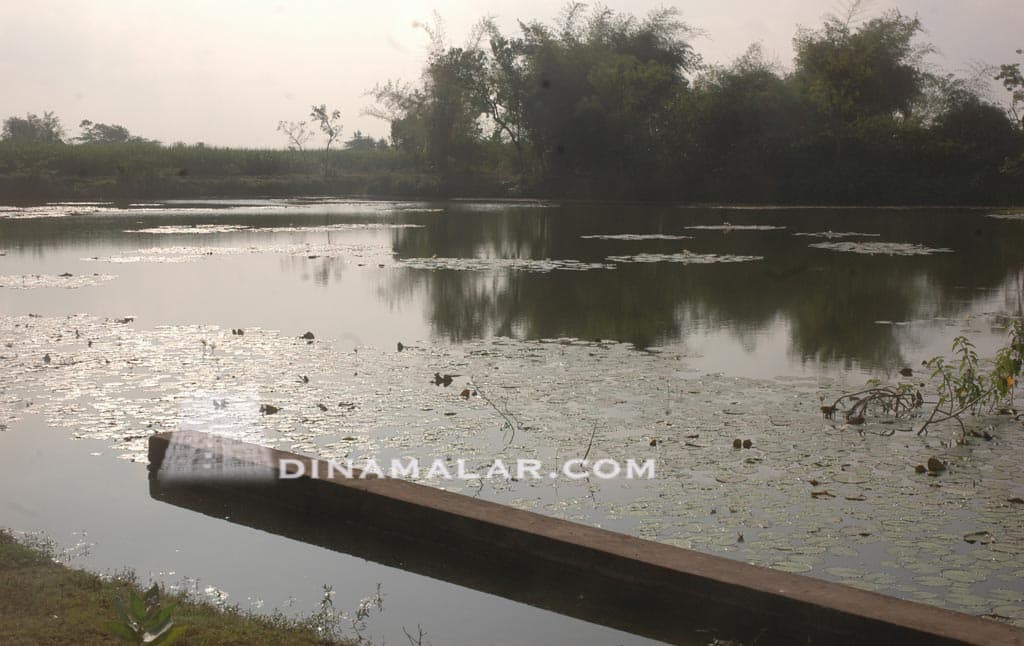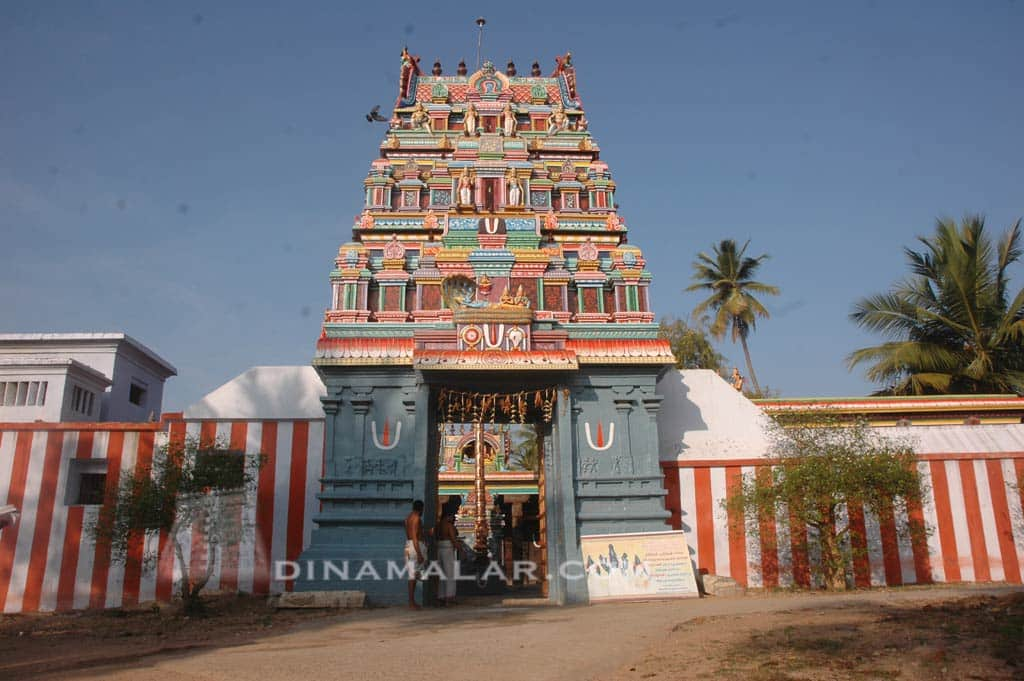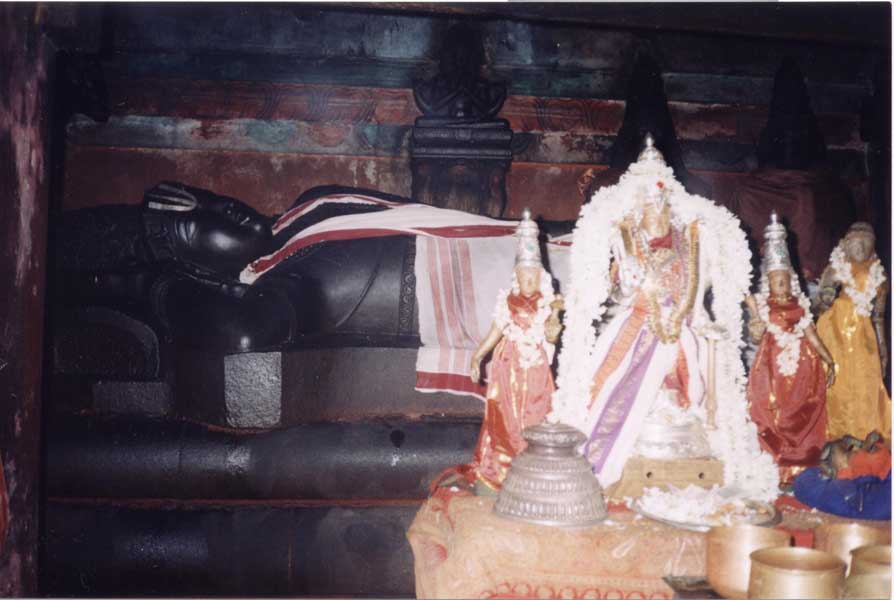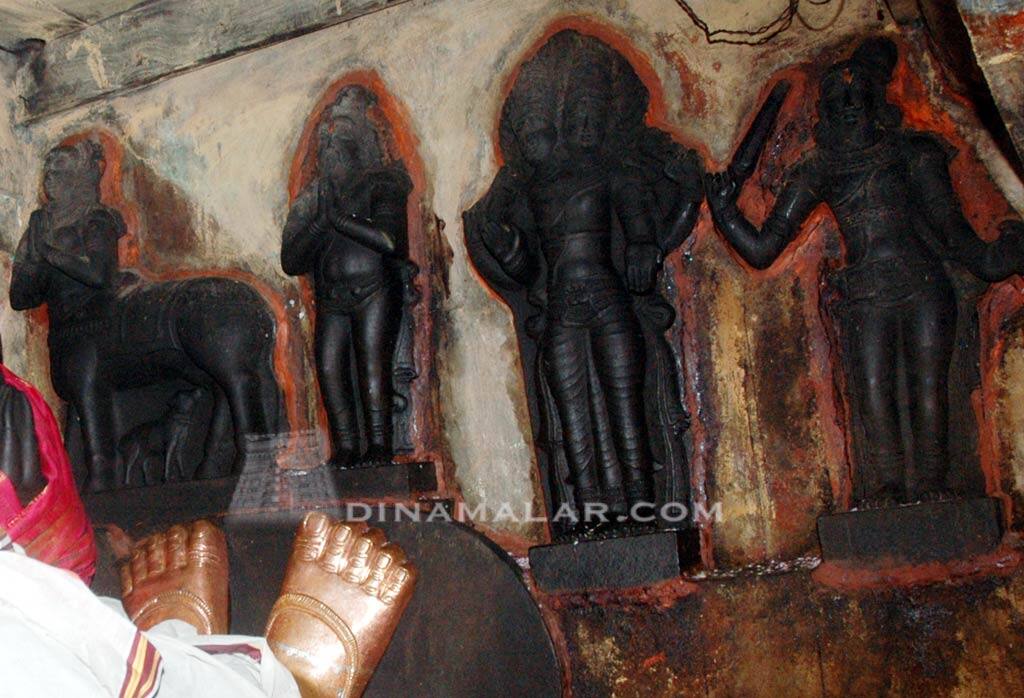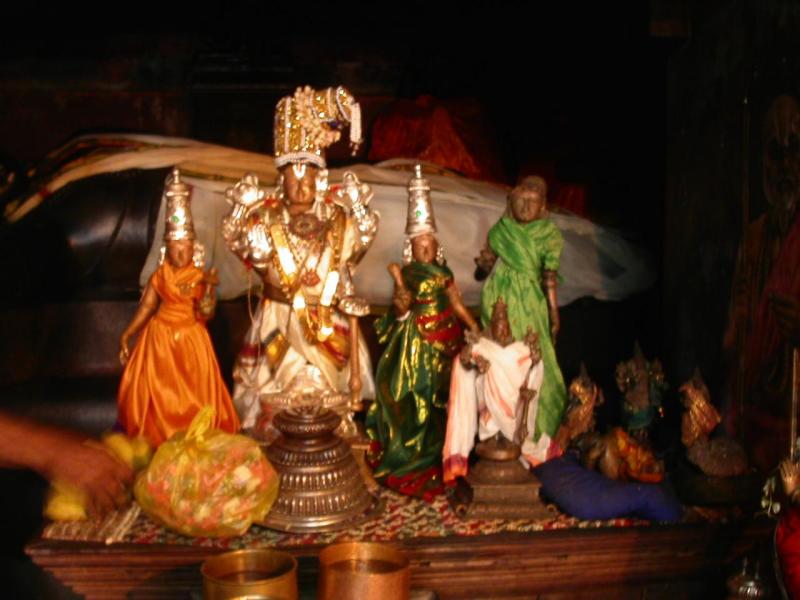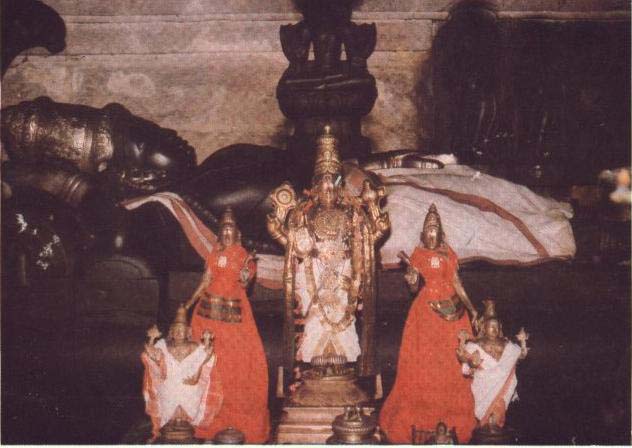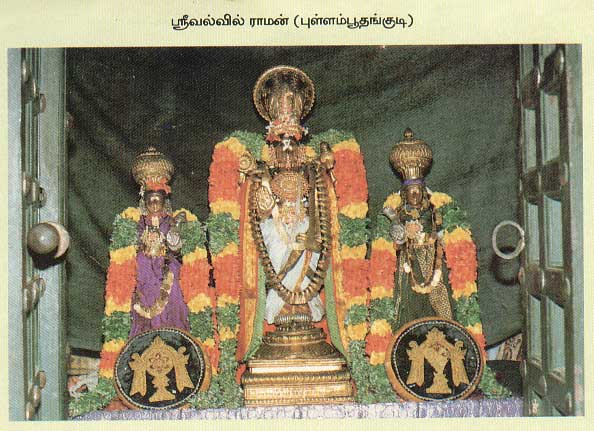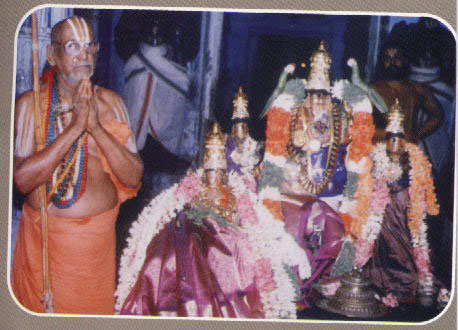GITA 8.15
 |
| SRI RANGANATHA TEMPLE |
Thamevamatma paravasudevam
rangesayam rajavadarhaneeyam |
prabodugeem yogrutha sooktimalam
bhaktanrirenum bhagavanthamide||
 |
| SRI AZHAGIYA MANAVALAR AND SRI RANGANAYAKI THAYR (UTSAVAR) |
Temple has a large Gopuram or tower. Crossing that, we enter Maha mandapam and then Artha mandapam. On one side is the sannidhi of the Lord and on other side is the sannidhi of Thondaradipodi Alwar. Today's [ 16th May 2008] lecture is from the sannidhi of the Alwar.
 |
| TONDARADIPODI ALWAR |
This Alwar is said to be the incarnation of Vanamala, a garland of the Lord. How his name changed to Thondaradipodi from Vipranarayana? Our sense organs create problems for us, but using these, the Lord teaches us the more sublime things in life. Mandangudi also is between Kaveri and Kollidam rivers, like Srirangam, and the Alwar had a boundless love for Sri Ranganatha. Due to this, he settled in Srirangam and establishing a garden, he was deeply involved in gathering flowers and preparing garlands for the Lord. A strange incident took place in his life. A temple dancer Devadevi and her sister, who lived nearby, once passed via the garden of the Alwar. Just then it started raining and the ladies took shelter in the hut in the garden. They peeped into the hut and saw the Alwar engrossed in the service of the Lord. The women were very beautiful, yet the Alwar never turned to them and was totally indifferent to their presence. Devadevi felt it was an insult to her beauty, but her sister advised that the Alwar was a great devotee and so she advised to get back to their house. Devadevi refused and declared that she would one day entice the Alwar and make him yearn for her. As part of her plan, she requested the Alwar to give her asylum and that she would assist him in his service. Ignorent of her plans the Alwar also allowed her to stay in his hut and assist him. One day when she was in the garden it rained heavily and she was drenched and started shivering. Seeing her plight Vipranarayana asked her to come inside the hut. The Lord played the game here. Seeing her wet, the mind of the Alwar was disturbed and passion blossomed in him. Slowly this deepened and he forgot all his duties and always wanted to be with her and remained in her house. Devadevi won in her promise. As days passed on, knowing that the Alwar was mad after her, once she drove him away from the house and said she would entertain him only if he brought wealth. Alwar could not get money and he remained at the doorsteps of Devadevi, waiting for her sympathy. The Lord continued His game. He took the form of a small errand and collecting one of the golden cups in the Sannidhi, He went to Devadevi and presented the cup saying that it was sent by Vipranarayana for taking him to her. Not knowing these, Vipranarayana was called in by Devadevi and he was delighted. In the sannidhi the Archakas, who do poojas for the Lord discovered that the golden cup was missing and reported the matter to the ruler. Ruler after long inquiry came to know that the cup was with Devadevi; finally, it was opined that Vipranarayana had stolen the cup, and so he was jailed. In the jail Vipranarayana got the wisdom and the Ruler also was informed by the Lord that Vipranarayana was innocent, and so was acquitted and released. Alwar nowrealisedd and became totally indifferent to worldly pleasures, and once again started his service and he became more involved in this service of the Lord. From that time he came to be known as Thondaradipodi. He has composed two prabhandams - Thirumalai and Thiruppalliezhuchi [திருமாலை, திருப் பள்ளியெழுச்சி ]- respectively consisting of 45 and 10 pasurams which are part of Nalayira Divya Prabhandam. His devotion to Sri Ranganatha was immeasurable. It is said that those who do not know Thirumalai, do not know the Lord [திருமாலை அறியாதார் திருமாலை அறியாதார்!].
We have to see 14th sloka of Chapter 8. Slokas 8,9 and 10 were for aiswaryarti. Slokas 11, 12 and 13 were meant for kaivalyarti. In the slokas 14, 15 and 16, Sri Krishna is going to tell the prescription for Bhagavallabharti. Here, He is telling how these type of devotees are to meditate on the Lord. It is a strange coincidence that while talking of bhagavallabharti, we are at the place of Thondaradipodi Alwar, who is an example of Bhagavallabharti. Now sloka 14:
ananya-cetah satatam
yo mam smarati nityasah
tasyaham sulabhah partha
nitya-yuktasya yoginah
yo mam smarati nityasah
tasyaham sulabhah partha
nitya-yuktasya yoginah
"For one who always remembers Me without deviation, I am easy to obtain, O son of Pritha, because of his constant engagement in devotional service."
Partha =Arjuna, ananya ceta =mind not involved in other matters. Devotee of the Lord does not divert his mind on other things. Yo = such a person, mam = [the pleasant for meditating upon] Me [Sri Krishna], smarathi = thinks. Arjuna asks when one should think of the Lord. Nityasah = from the time one starts devotion, satatam = without interruption even for a second. Excepting the time for his prescribed duties, this person always thinks of the Lord. Tasya =for such a devotee,aham = I [Sri Krishna] am, sulabha = easily [available], nitya yuktasya = wants to be associated always, yogina = are such yogis. These devotees can not even bear a second separation from the Lord. Here, the Lord says that only for these devotees He is available easily for these devotees, and not for aiswaryarti and kaivalyarti. Because both these persons are using the Lord to attain some thing else. So they will get those rewards after toiling; while this bhagavallabharti wants the Lord Himself and so He is available easily. Another interpretation is that the Lord is pleasant to meditate and so He makes the means also pleasant to reach Him. Where as, the other two are wanting not pleasant things and so their paths will also be hard. Also we should remember that atman and the Lord have inseparable bond. Atman is not connected with material benefits; nor atman is connected with itself. Worldly matters are not atman's properties. But the Lord and atman are bonded from time immemorial. So attaining the Lord is easier. We should therefore, understand that attaining the Lord is easier and more pleasant than attaining wealth or enjoying one's own atman. We are His properties and so even a small effort will make the Propreitor to easily possess us. He ensures that this devotee's desire for wealth is not there; nor he is allowed to go in for atmanubhavam. Story of how Vipranarayana becomes Thondaradipodi Alwar is the right example of how the Lord enables His devotee to attain Him.
(continued)

